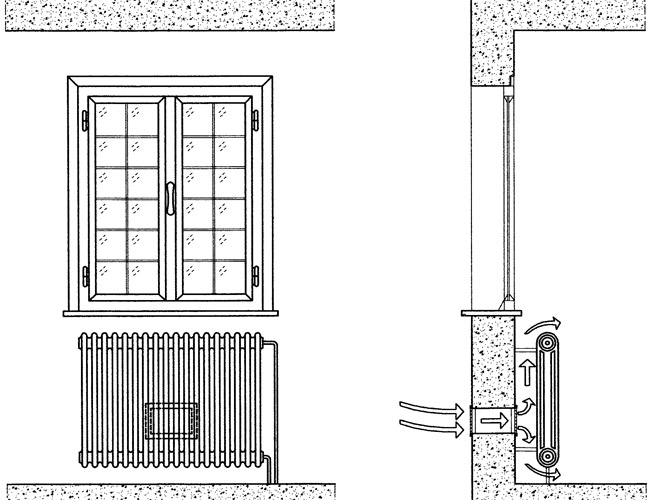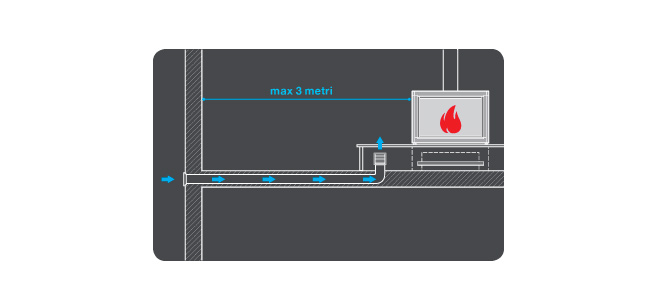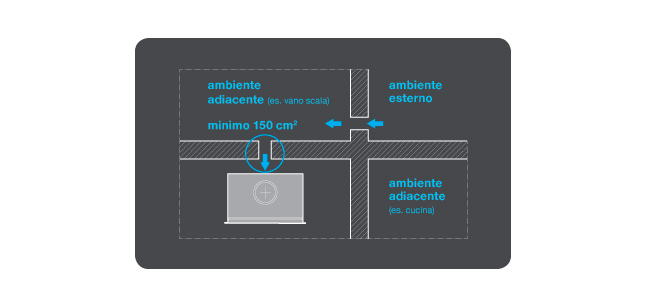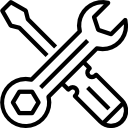Why It’s So Important When Installing a Stove or Fireplace
Let’s refresh your basic knowledge of physics.
Combustion is a chemical reaction in which a fuel (in our case wood or pellets) is burned by an oxidizer (oxygen), releasing heat. What does this mean? That the supply of oxygen through an air intake is absolutely necessary for proper combustion.
An air intake not only provides oxygen, but also helps maintain a pressure level in the room that ensures perfect draft. The fumes generated by combustion must rise through the flue and not flow back into the room. This is possible thanks to the incoming flow of fresh air, which prevents what is known as “negative pressure.
How can you create this air intake without making it too invasive?
Here are the most practical solutions.
AIR INTAKE NEAR OR BEHIND THE STOVE
If the stove is installed on a wall that faces the outside, the opening (minimum free section 150 cm², rectangular or circular) should be made as close as possible to the stove, to avoid unpleasant draughts inside the room.
It is not necessary for the opening to be on the same wall as the stove. A clever solution is to “hide” it behind a radiator grille, as shown in the image below.

AIR INTAKE INSIDE THE FIREPLACE CLADDING
In the case of fireplaces, the best solution is to create the air intake within the cladding itself.

If the fireplace or stove is not directly adjacent to an exterior wall, you can channel air through the floor from outside. Keep in mind that the maximum length of this ducting should not exceed 3 meters. In this case, the air intake must be larger (minimum free section approx. 165 cm²).
AIR INTAKE FROM AN ADJACENT ROOM

The air required for combustion can come directly from outside or from adjacent rooms, provided these rooms have their own external air intake and are not used as bedrooms, bathrooms, or rooms with a fire hazard (garages, wood storage rooms, warehouses with flammable materials).
CAUTION WITH OPEN-PLAN SPACES (LIVING + KITCHEN)
In kitchen-living areas, it is essential to check that there are no extractor hoods without their own air intake. A fireplace operating at the same time as gas stoves or ovens could cause negative pressure, so it is always better for these appliances to have their own external compensating air intake
Want to know more about the basic rules for installing a fireplace?
Download the "Fireplace Design Guide", prepared by MCZ’s technical consulting service. You can find it here.
If you have a specific design issue, you can contact our consultants through this form.


